
It’s the 8th of April, and we’re seeing a welcome recovery in the markets after the drubbing we took yesterday. It’s been a volatile, violent overnight session for the US markets, but fortunately, they didn’t close too badly. This morning, we saw a gradual rise across most global markets, and I’d say the Indian market has held up reasonably well given the current circumstances.
Looking ahead, April 9th, US time, could bring more clarity on tariffs and their potential impacts. Negotiations are ongoing, with the EU and Japan working hard to come to an agreement. However, the standoff between the US and China remains at an impasse. There’s also the looming possibility that China may undertake significant currency devaluation, which would mark a new chapter in this ongoing trade saga. While I’m hopeful that this marks the end of the recent downturn, it’s still too early to say if the worst is behind us.
Will we fear the crash, or follow history’s lessons?
Where is the market headed?
Market Overview
The markets had a significant drop from nearly 23,000 to around 21,700, but today we’ve seen a bounce back to 22,200 yesterday and 22,500 today. This means that, while some of the damage has been recovered, a substantial portion is still unfilled, and it’s unclear whether we’ll continue climbing or if we’ll retest the bottom soon.
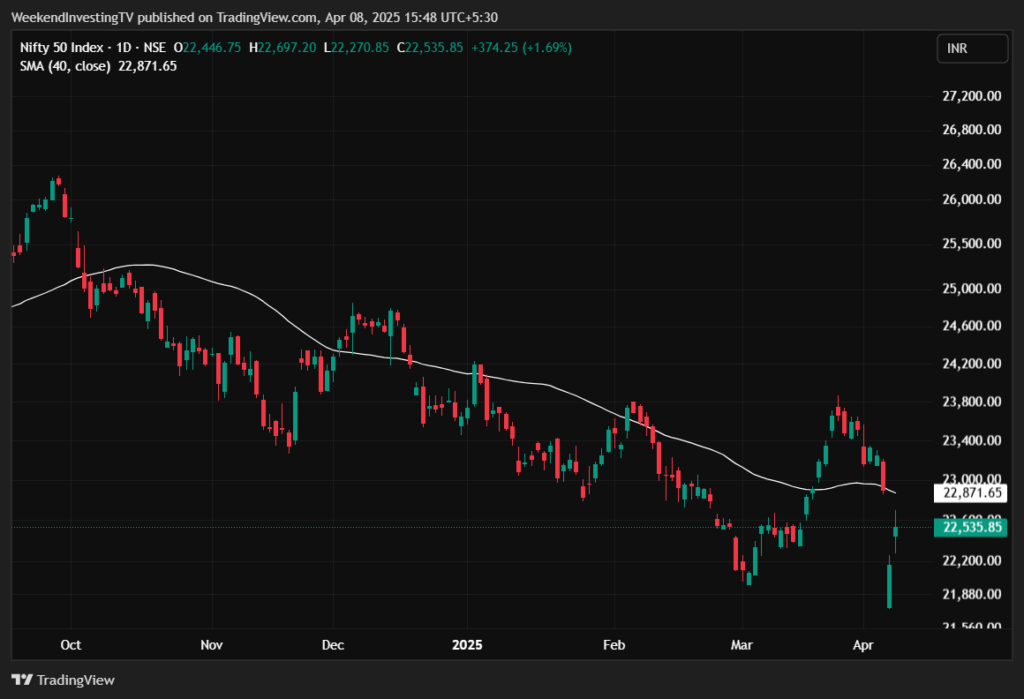
Nifty Next 50
The Nifty Junior is showing a solid recovery, up 2%, and though it’s just shy of a full recovery from the last couple of days, it’s a good sign for the broader market.
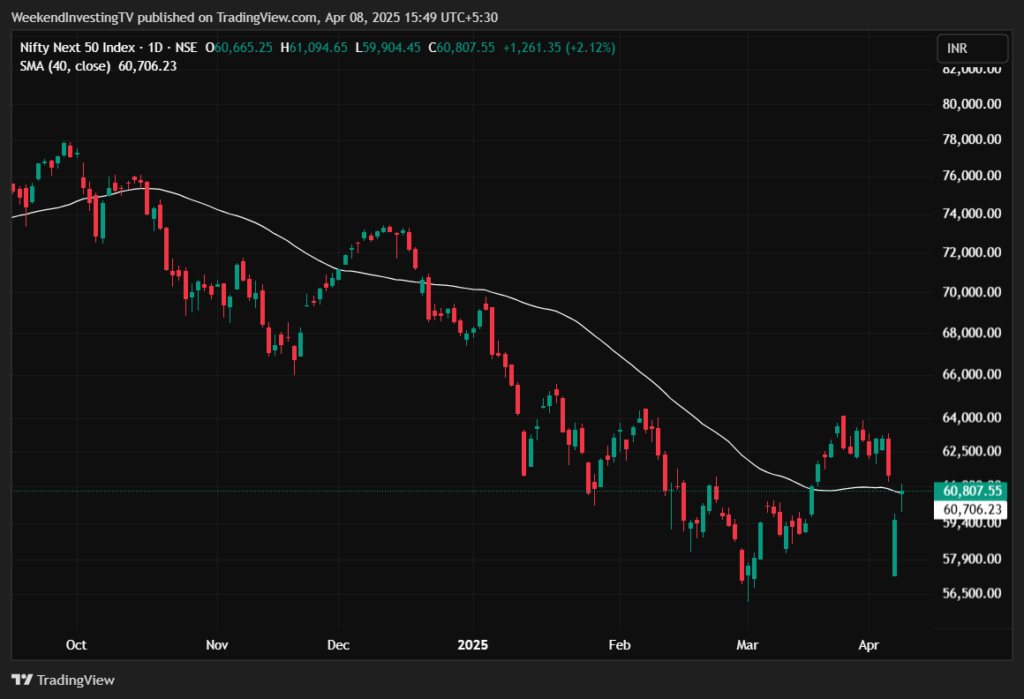
Nifty Mid and Small Cap
The Midcaps are also up by 2%, filling much of the previous damage, but some remains. Small caps have posted a similar 2.17% gain today, though they still haven’t completely filled the gap.
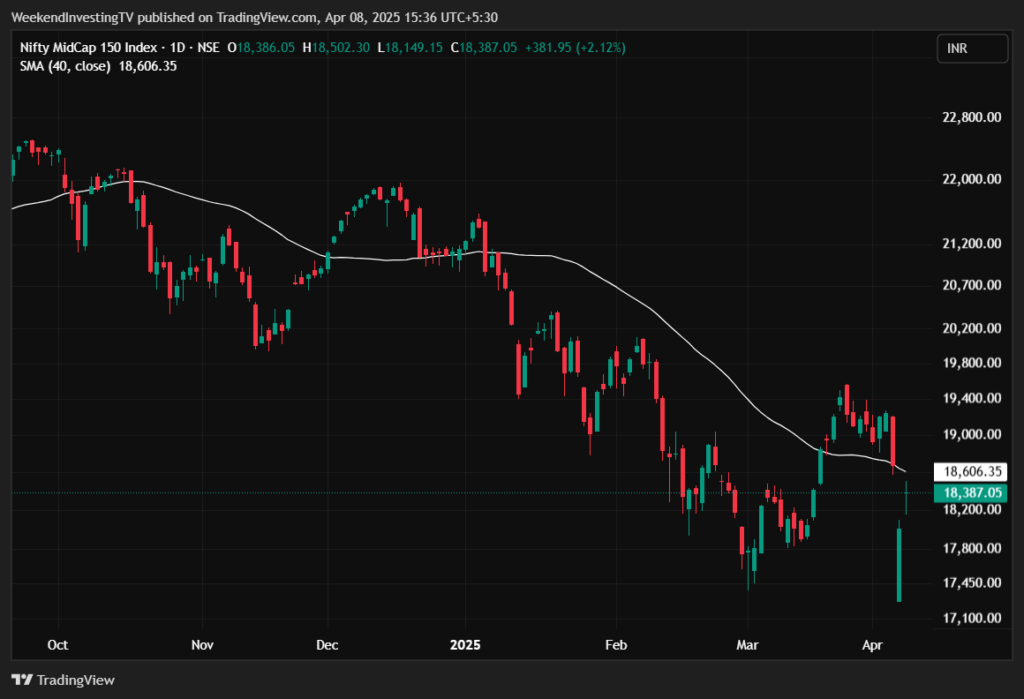
Nifty Bank Overview
Bank Nifty is lagging slightly, with a 1.3% gain, but remember, Bank Nifty had not fallen as sharply as other indices, and it’s still holding up well compared to the March lows.
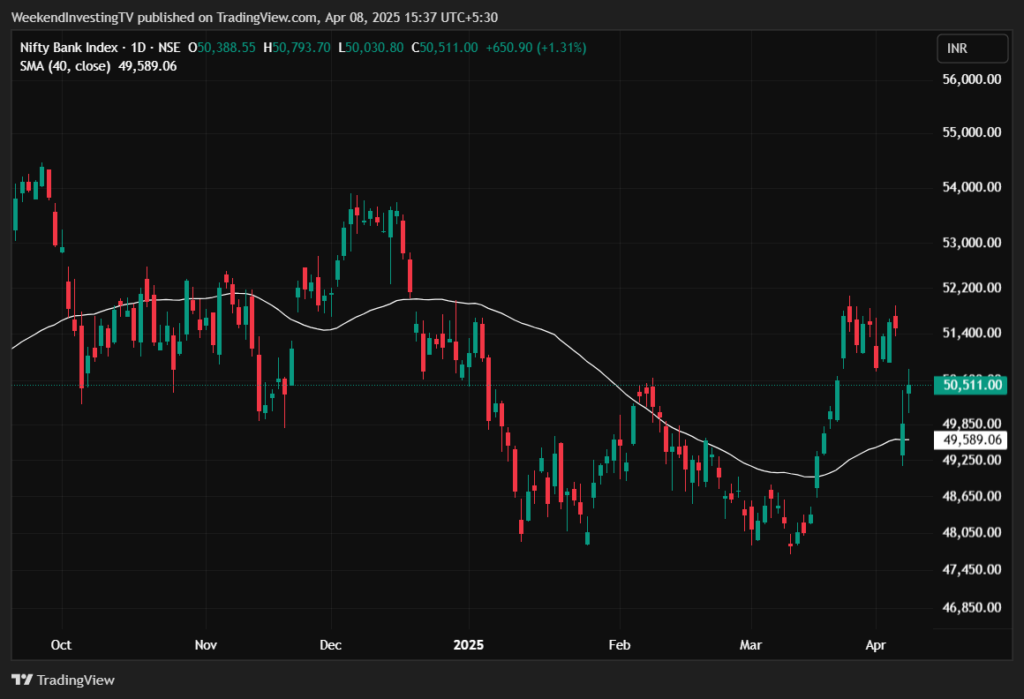
GOLD
Gold has made a strong comeback as well, rising by 1.24% to nearly 88,300 as I write this. Interestingly, gold typically falls in tandem with equity markets during a sharp crisis due to margin calls and the need to liquidate assets to cover losses. That said, I’m optimistic that gold will continue to climb from here, especially if the geopolitical risk environment continues to escalate.
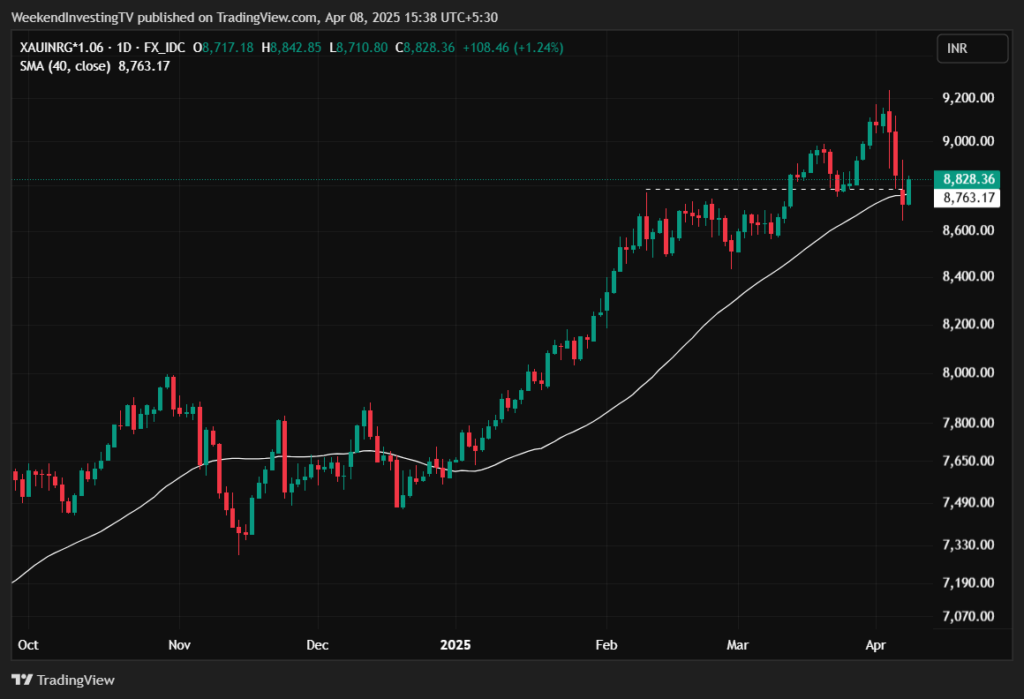
Advance Decline Ratio
The market breadth today is much better than yesterday’s, with advances outnumbering declines by 453 to 47. While we’ve only recovered about half of yesterday’s losses, it’s a positive step forward.

Heat Maps
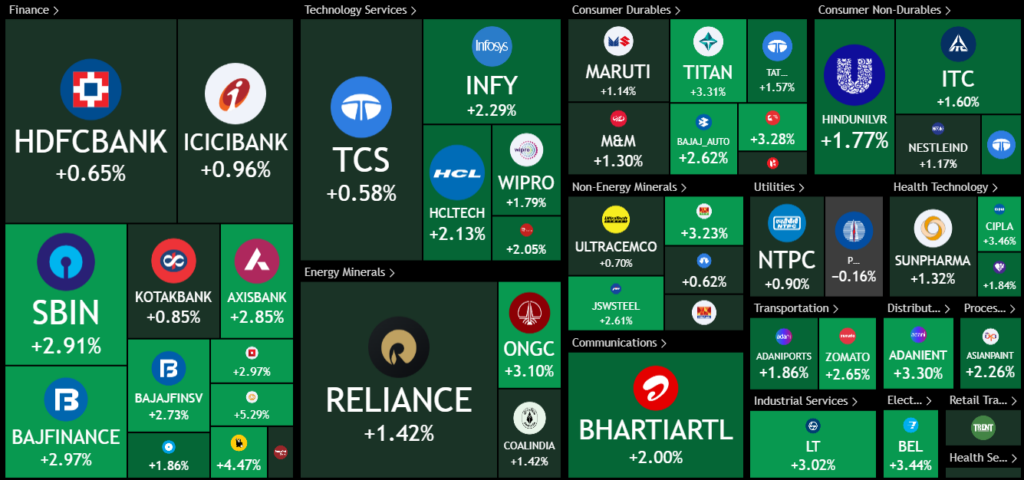
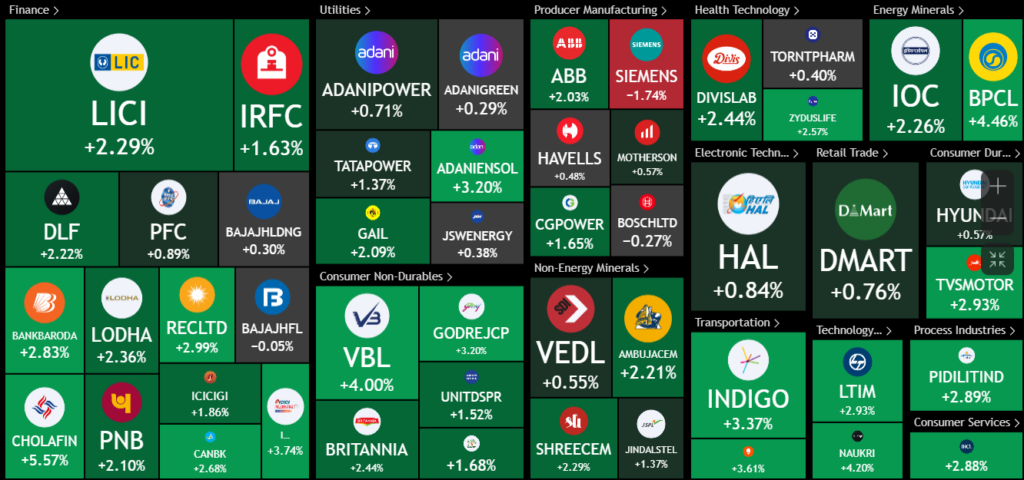
Sectoral Overview
In terms of sectoral trends, Media and Capital Markets are leading the charge, with Media up 4.7% and Capital Markets up 3.2%. Interestingly, the Capital Market index has been one of the strongest performers over the past month, gaining 8%, despite being down 1.8% over the past week. Other sectors performing well today include Defense, Tourism, PSU Banks, and Real Estate.
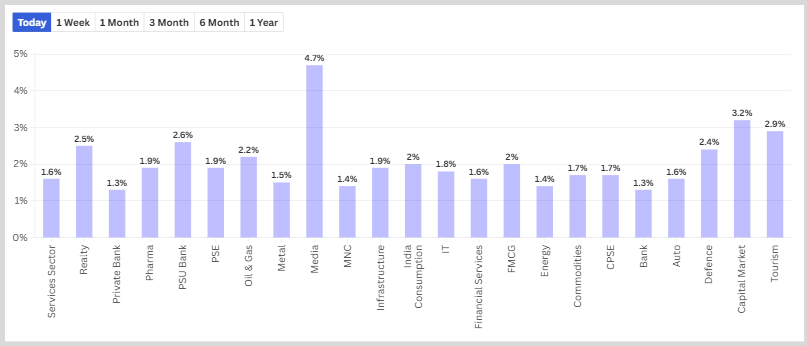
Sectors of the Day
Nifty Media Index
Media stocks, such as Zee, PVR, Hathway, Sun TV, and DB Corp, have been standout performers, with Zee surging nearly 11%.
What’s interesting about the media sector is that it tends to be neglected by institutional investors, despite being a bellwether sector. Media companies usually do well irrespective of the economic environment, as their popularity doesn’t diminish during a crisis. Yet, they remain undervalued compared to other sectors.
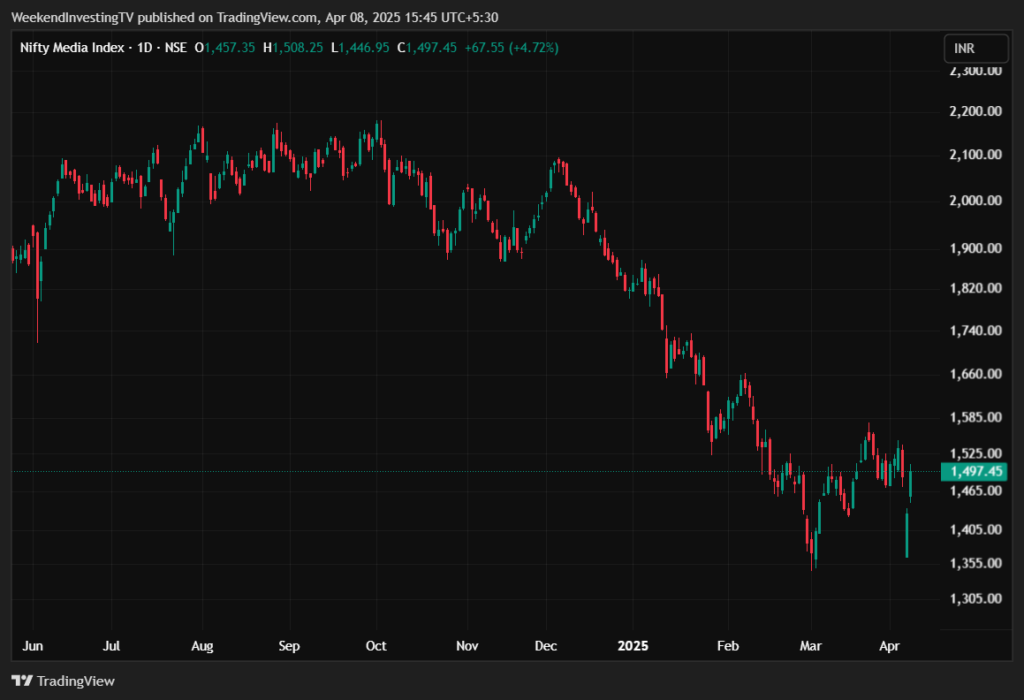
Story of the Day : History Repeats Itself: Lessons from Past Market Crashes
Now, let’s move to today’s primary topic: Fear the Crash or Follow History?
To gain insights into our current situation, we need to look at some of the most significant market crashes over the past century. From the 1929 Great Depression to the 1987 Black Monday crash, the 2000 Dot-Com bubble, and the 2008 Global Financial Crisis, history has shown us how markets react to extreme shocks. While each of these events was devastating at the time, they also provided opportunities for those who survived the turmoil.
The 1929 Great Depression:
Between 1921 and 1929, the stock market had an incredible 25% Compound Annual Growth Rate (CAGR), but it was built on speculative excesses, easy credit, and rampant speculation. The market crash wiped out 86% of the value, and it took almost three years to recover. Afterward, the market stagnated for years. However, those who held on through the crash saw a profit after 25 years. Interestingly, during this period, gold was revalued as part of a broader devaluation strategy, marking a key point in economic history.
The 1987 Black Monday Crash:
From 1982 to 1987, the market experienced another massive rally, fueled by 25% CAGR. The crash itself, triggered by automated trading algorithms, led to a rapid 20% drop in a single day. However, the market recovered within two years, with investors seeing a more moderate 21% CAGR over the entire period, despite the brief downturn. In this case, the immediate aftermath of the crash was relatively mild compared to the 1929 crash.
The Dot-Com Bubble (2000):
The late 1990s saw another frenzy, with tech stocks soaring despite little or no earnings. The bubble burst in 2000, and the market took two and a half years to fall by 50%. However, the next five years saw the market recovering and eventually reaching new highs. In the meantime, gold performed exceptionally well, rising 169% as investors sought safe-haven assets.
The 2008 Global Financial Crisis (GFC):
Leading up to the GFC, the market experienced an exceptional run from 2002 to 2007, with a 15% CAGR. However, the subprime mortgage crisis and the collapse of Lehman Brothers in 2008 caused a 50% crash. It took five and a half years to recover fully from this disaster, but again, gold performed well during the downturn, proving to be a reliable hedge against the stock market crash.
Key Takeaways: What the History of Market Crashes Tells Us
When we look at these historical events, one thing becomes clear: while crashes can be painful and unpredictable, they don’t last forever. In fact, each major crash was followed by a recovery and a new bull market. Understanding this context is crucial for investors, as it helps frame the short-term volatility within a larger picture of long-term growth.
While we may be living through a downturn right now, history suggests that, as long as we survive the crash, we will eventually see fantastic opportunities for growth. We need to remember that it’s the panic during these times that often creates these opportunities. If interest rates start to fall, liquidity will likely increase, supporting the recovery of risk assets like equities. Gold, too, should perform well, especially in today’s environment of geopolitical uncertainty.
So, while it’s easy to get caught up in the noise of the current crash, keep in mind that sharp declines often lead to equally strong rebounds. We may not be at the bottom yet, but if we are, the future could be bright for those who have the patience and discipline to hold on.
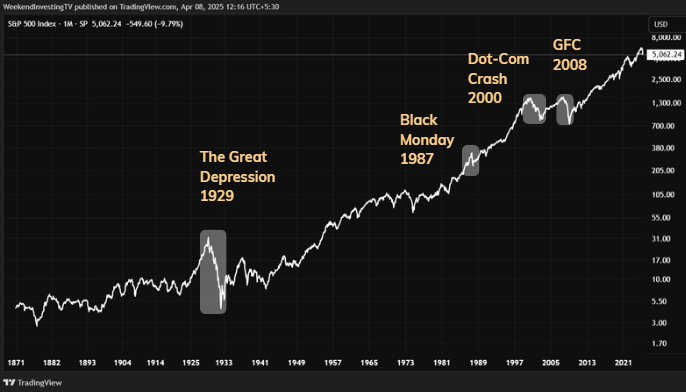
WeekendInvesting launches – The Momentum Podcast
🚀 The Momentum Podcast – Episode 2 is Live! 🎧
Join Rajnish as he shares his journey from traditional investing to mastering momentum strategies. Hear his insights on real estate vs equities, gold investing, and the key lessons he’s learned along the way
Watch it now—don’t miss it!
Disclaimers and disclosures : https://tinyurl.com/2763eyaz






